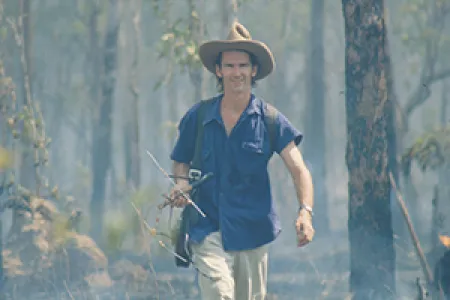Beds are burning in tropical savanna
A Charles Darwin University researcher is urging Top Enders to burn responsibly after discovering fires can disrupt small mammals’ breeding patterns.
As the fire season begins, PhD graduand Dr Tony Griffiths said his research showed fire was a contributing factor to the decline of threatened native species, such as the northern quoll and northern brown bandicoot.
Dr Griffiths, who will receive his PhD at this week’s CDU graduation ceremonies, found small mammals were able to survive during and after fires, but their abilities to reproduce or recruit declined.
“We need to act now,” Dr Griffiths said.
“Whether it is big or small, when you light a fire, it causes an impact on the fauna, especially these groups that are sensitive or have short life expectancies.”
Dr Griffiths said these mammals were at risk from changes in fire regimes introduced since Western colonisation.
He said the mammals would benefit from a fire management regime that allowed them to reproduce, such as reducing late dry season fires to once every five years, as opposed to every second year.
“I am optimistic that the ecosystems and landscapes in the NT are resilient enough to cope with the change and I am hoping they will find a way to adapt,” Dr Griffiths added.
He said northern Australia’s tropical savanna was among the most fire-prone landscapes in the world.
Dr Griffiths documented his findings in his thesis, with a title inspired by a Midnight Oil song: Beds are burning: small mammal responses to fire in tropical savannas of northern Australia.
He used data collected from a CSIRO fire experiment at Kapalga Research Station in Kakadu National Park. The experiment explored various factors impacting on the population dynamics of numerous mammal species over six years in the 1990s.
